The forecast for the weekend had been bleak. With frequent rains and cloudy days, I was a bit circumspect if we would eventually be able to go down to the Veerabhadra Temple in Lepakshi. Fortunately for us, it turned out to be a lovely sunny day.
The Veerabhadra Temple lies not far from Bangalore in the Indian state of Andhra Pradesh. It is popular around these parts for its outstanding sculptures and ceiling paintings which represent the climax of the Vijayanagar Art towards the middle of the 16th century. Built in 1530 CE, the architectural features of the temple follow the Vijayanagar style to the detail, with numerous carvings and paintings at almost every exposed surface of the temple.
How to reach Veerabhadra Temple
We started from Bangalore at about 1 pm. The journey was uneventful as we passed by some fine stretches of flowering Gulmohar trees along the NH7.
After about an hour and a half of driving along the national highway, we reached a toll booth at the borders of Karnataka. Immediately after the toll booth, we took a hard left into a branching road towards Lepakshi. The road is adorned with a huge gate and a big Nandi statue sitting in the center. From here Lepakshi is just about 12 km away.
Once we left the highway, the road narrowed down to a 2-lane driveway, but it was still well maintained. I thank the Andhra Pradesh government, who have done a great job for the many foreign and local tourists, who have no other way to reach this historical site.
After about another 20 minutes, we found ourselves in front of the first attraction of the day – the colossal monolithic Nandi, carved from a single block of granite, said to be one of the largest of its type in the world.
Nandi of Lepakshi
Since I have relocated to Bangalore, this imposing sculpture of Nandi has been beseeching me to visit. Today, I found solace as I stood in front of the monumental Shiva’s mount from the Vijayanagar era. Seated peacefully in a lovely manicured garden the statue faces the precincts of the Veerabhadra Temple. The statue is about 5 meters in height and 9 meters in length. Its neck is bedecked with finely carved garlands and bells.
One of the first question that comes to one’s mind who understands Hindu mythology is “where is the shivalinga?” It is also quite odd that this large Nandi bull is situated almost 200 meters away from the temple. Generally, every Nandi statue I have seen is always accompanied by a shivalinga before it.
As we snapped away capturing different angles of the nandi, the caretaker walked in towards us. He carried a large wooden stick in his hand. He told us that the temple and the Nandi sculpture used to be part of the same temple grounds and during ancient times there used to be a clear view of the temple from here, however illegal encroachments have separated the Shiva’s mount with its master.
After taking a few pictures of the grand Nandi, we came out of the small garden, planning to head towards the Veerabhadra Temple. Before entering the temple, we stopped for lunch at the Andhra State tourism board run restaurant, just beside the Nandi sculpture. After a sumptuous vegetarian thali meal and some rest, we gradually made our way towards the temple.
Veerabhadra Temple of Lepakshi
The Veerabhadra Temple has been built on the southern side of Lepakshi town on a low altitude granite hillock. The locals say this hillock was in the shape of a tortoise, and hence known as Kurmasailam – which translates to tortoise hill in Telugu. It is hard to see much of the hillock now because of the numerous shops and houses built around the temple.
You can avail parking near the entrance to the temple. There is a fixed car parking charge of Rs. 40 for an unlimited number of hours.
One has to remove their shoes before entering the temple. Beside the entrance, on the left there is a makeshift shoe rack. Patrolling this area is a middle-aged lady holding a long wooden stick in her had, primarily I think to drive the naughty monkeys away from the area. The temple does not seem that special from outside, but once you climb the fleet of steps and enter, you will begin appreciating the thorough artwork of the sculptors of that time. Not even at Hampi, in the historical temples at the core of the Vijayanagar empire, can one find carvings of this stature.
History of Veerabhadra Temple
In 1346 CE, Harihara constructed a fort at Penukonda, a town in Anantapur district of the Andhra Pradesh. It was one of the important provincial centers and occupied a strategic position in the Vijayanagara period. He made Lepakshi his second capital marking the start of the Vijayanagara rule over the town. During the rule of this dynasty, Lepakshi was benefited from a multitude of construction activities, centered around this temple.
Construction of the Veerabhadra Temple was started in around 1530 AD by two brothers, Virupanna Nayaka and Viranna, who were Governors of Penukonda, under the Vijayanagar Empire during the reign of King Achyutaraya, the successor of King Krishnadevaraya. Virupanna was the son of Nandilakkisetti of Penukonda and rose to a position where he made himself prominent and indispensable. Inscriptions of the time of Acyutarāya inscribed on the walls of the temple give particulars about the neighbourhood, the temple and the devoted brothers.
The temple was dedicated to Veerabhadra Swamy, the family God for Tuluva dynasty. In the south Veerabhadra is known as the angry form of Hindu God Shiva. One interesting aspect of this temple is that it is North facing. Hindu temples are typically East facing, while there are some West and South facing temples too, North facing temples are rare in comparison.
Even today, no one stays in the temple after sunset as the locals believe that Veerabhadra Swamy will be coming for rounds at night
The main temple stands inside two concentric irregular enclosures. The outer enclosure wall is lined with shielded porches and corridors surrounding the temple grounds.
The main temple is laid out in three parts:
Mukha mandap, Veerabhadra Temple, Lepakshi
As I entered the inner sanctum, I was awed by the profusion of sculptures and paintings over every inch of space on the columns as well as the ceilings. Karnataka and several parts of Andhra are blessed with an abundance of granite hills and our ancestors have used it smartly so what they created hundreds of years back can still be enjoyed by us and I hope numerous generations.
Inside the Mukha mandap, there are about 70 pillars at this fabulous 16th-century temple of stone in Vijayanagar style. The carvings on these 15-foot pillars constitute of divine beings and the avatars of Shiva. I felt the cold stone through my naked feet as I walked along with the figurines of the goddesses Ganga and Yamuna at the entrance to the sanctum.
The central space is surrounded by many pillars with sculptures of divine beings. The first to catch my attention was that of the Nataraja, standing over the demon named Apasmara. Nataraja sculpture is almost the same pose as Natesha, the difference being Shiva has his left leg raised, unlike Natesha who has his right leg raised in the same pose.
Beside him lies a sculpture of Brahma playing the Mridanga. The Mridanga is a percussion instrument from India of ancient origin also known as ‘Deva Vaadyam‘ or the instrument of the Gods.
In an adjoining column, one can see the lovely Rambha, a celestial nymph, in a dancing posture created with the minutest of details. In Hindu mythology, she is the Queen of the Apsaras (nymphs), the magical and beautiful women of Devaloka, the city of the divine gods.
The column at the southwest part of the hall has an image of Parvati, Shiva’s consort, feeding her husband, who was disguised as a beggar. There are many such interesting tales in Indian mythology.
Beside her statue on another pillar one can see the three-legged Bhringi. If you notice carefully, he has 3 legs. Wondering why? read on..
Bhringi was an ancient sage who would not worship Parvati and took forms such as a snake or a bee to be with only Shiva and trying to drive a wedge between them. Annoyed by this, Parvati cursed Bhringi and he became so weak that he could not dance anymore. Shiva seeing his pain, granted him an additional, third leg and since then Brungeshwara is always seen dancing with 3 legs .
Musicians and ascetics adorn the intermediate pillars.
The Natya (dancing) and the Ardha (worship) Mandaps are the most interesting parts of the temple in terms of architecture.
The mystery of the hanging pillars of Lepakshi
The peripheral columns called the Aakaasa Sthambha, are slightly elevated on an ornate basement, with blocks carved of horses and warriors, a tribute to the engineering genius of ancient and medieval India’s temple builders.
How such a heavy pillar stays hanging just about a centimeter above the basement is truly a mystery. it is said that during the British colonization, a British engineer had tried to uncover the secret of its support in an unsuccessful attempt.
Ceiling paintings of Lepakshi
As I searched for answers to the secret of the hanging pillars, my eyes were drawn towards the ceiling. The fresco in the ceiling of ardha mandapa is said to be Asia’s largest, measuring 23 by 13 feet with the depiction of all the 14 avatars of Lord Shiva as Ardhanarishwara, Andhakasurasmahara, Bhikshatana, Chandes Anugraha Murthy, Harihara, Kalyanasundara, Tripurantaka, Nataraja, Gouriprasadaka, Lingodhbava, and Yogadakshinamurthy. The frescoes are also beautiful and show an impressive attention to detail with colors strikingly contrasted – black limework against an orange-red background with some green, white, black, and shades of ochre-gold and brown mostly applied to a stucco surface blended with lime water.
This is a panel of Dakshinamurti. is the name of the Hindu god, Shiva, as the supreme guru who imparts higher knowledge. The name comes from the Sanskrit, dakshina, meaning “southern” or “right”; and murti, meaning “incarnation,” “personification” or “image.” It is usually translated as “the one who faces south.”
Dakshinamurti is a form of Shiva, which is found invariability in almost all the Shaiva temples of Tamilnadu. Shiva, in this form, is depicted as the “Guru who guides his devotes in the right path (dakṣiṇāmārga)” and hence called by this name. In this form, Shiva is represented as seated on a rock in lalitāsana. His right hand is in vyākhyānamudra. Other hands hold sarpa, agni and akṣamāla. The four sages (Sanaka, Sanandana, Sanatkumara and Sanatsujata) are represented as seated on the foreground.
Apart from paintings of gods and goddesses, in the presence of the devotees arranged in rows, the frescoes also depict the various incarnations of Vishnu. The paintings are in striking compositions where particular emphasis is given on the period costumes and facial expressions depicting the grandeur of Vijayanagar pictorial art. The fresco paintings are particularly detailed in very bright dresses and colors with scenes of Rama and Krishna from the epic stories of the Ramayana, the Mahabharata, and the Puranas. However, these frescoes are peeling off in many places and in need of better maintenance and expert restoration.
The ceiling in the sanctum above the deity has paintings of the builders of the temple, Virupanna and Viranna, regally dressed and crowned with headgear. They are depicted, with their entourage, in a state of reverential prayer, being offered sacred ashes of their family deity.
Garbhagriha, Lepakshi
The temple’s main deity is Veerabhadra, the fiery god created by Shiva in his rage after the Daksha Yagna and the immolation of Parvati. The presiding deity in the sanctum sanctorum is a near life-size image of Veerabhadra, fully armed and decorated with skulls. There is a cave chamber in the sanctum where sage Agastya is said to have lived when he installed the image of the linga here. I would recommend the caretakers to install softer yellow lights to preserve the ancient feel of the place when it used to be lit up only with diyas, rather than the intrusive bright white bulbs.
There are several forms of Shiva here — a majestic Kankala Murthi, Dakshinamurthi (Guru of Gurus), Tripuranthaka or Tripurasurasamhara (vanquisher of demon Tripura); Ardhanareeshwara (the half-female, half-male form, where Shiva and Parvati are equally represented in one body), etc. Another shrine has the fiery goddess Bhadrakali, though bearing an uncharacteristically serene expression. Photography is not allowed inside the garbhagriha.
Kalyana Mandap, Lepakshi
After paying our respects we came back out into the Mukha mandap and headed left towards the marriage hall. We slowly walked out of the shadows of the temple porch into the now blazing sun.
But as I got up the stairs, I was saddened to see the structure in an unfinished state. There are 38 pillars in this Mandap. The peripheral columns looked completed, but the columns towards the center of the altar were standing bent with no ceiling. Parts of the ceiling joints lay at the base of the column.
The theme of these carvings is the marriage of Parvati and Shiva. Inside the mandap the pillars are arranged in the form of a circle, with the Gods and Goddess who attended the wedding also carved on the pillars.
Parts of this temple complex and some structures within never got completed. Why? That is another story in itself…
The beautifully crafted pillars of the unfinished wedding hall still lie out in the open air with no ceiling. Virupanna, it is said, had grand plans for the temple. In his blinded pursuit, he emptied the treasury for funding the monumental project. For this financial embezzlement, the architect met with a gory fate, with his eyes were gouged out, as was the customary punishment for cheating in those days. With his conviction, the construction was stopped indefinitely and the structures have been standing in a semi-broken state as we see it today.
Even though many of the pillars of the Kalyan Mandap are unfinished, it will still amaze you with the fine craftsmanship of the sculptors. In fact in the radiant sun, this section of the temple impressed me even more than the main mandap. I rested for a minute on one of the fallen pillars for the day was warm.
Ganesha, Lepakshi
From the marriage hall, we took a left towards a mammoth Ganesha – hewn in stone and leaning against a rock. This giant monolithic Ganesha carved in to the side of the boulder is also one of the attractions of Veerabhadra temple. Veerabhadraswamy inside the Garbhagriha is ugraroopi meaning he is in an angry state. It is considered that the teekshna drishti (angry eyes) of Veerabhadraswamy is too powerful for mere mortals and one should pray to Ganesha before entering the sanctum.
On the back side of the Ganesha idol, one can find stains of blood which leads us to the story of Bhaktha Kannappa Nayanar and how he sacrificed his eyes to Lord Shiva.
Kannappa Nayanar was born in a vyadha (hunter) family. Being a hunter, he did not know how to properly worship Lord Shiva. It is said that he poured water from his mouth on the Shiva lingam which he brought from the nearby river Swarnamukhi. He also offered Lord Shiva whatever animal he hunted. But Lord Shiva accepted his offerings since Thinna was pure at heart and his devotion was true.
Thinna noticed that one of the eyes of the Shiva linga was oozing blood and tears. Sensing that Lord Shiva’s eye had been injured, Thinna proceeded to pluck his one eye out with one of his arrows and placed it in the spot of the bleeding eye of the Shiva linga. This stopped the bleeding in that eye of the linga. But to complicate matters further, he noticed that the other eye of the linga has also started oozing blood. So Thinna thought that if he were to pluck his other eye too, he would become blind to exactly know the spot where he has to place his own second eye over the bleeding second eye of the lingam. So he placed his great toe on the linga to mark the spot of the bleeding second eye and proceeded to pluck out his other and only eye. Moved by his extreme devotion, Lord Shiva appeared before Thinna, stopped him from plucking his only eye and restored both his eyes.
Nagalinga, Lepakshi
Beside the Ganesha, is a massive Naga (serpent) with three coils and seven hoods. The monolithic Nagalinga, approximately 12 feet in height, forms a sheltering canopy over a black Shivalingam. It’s reckoned by many as the largest Nagalinga in India.
The nagalinga has a small crack and there is a story behind it too. in one hour, while their mother cooked lunch and she said it will take time, by that time before their mother finishes breakfast preparation they will be completing the Shiva Linga with seven heads snake. When their mother finished cooking she saw this amazing sculpture, praised her sons/sculptors, and soon a crack appeared at the base caused by her “evil eye”. With that a small crack happened.
You never find Lord Shiva Linga without Nandi. If you recall the Nandi we saw before entering the temple. That nandi used to sit directly staring at this linga. Unfortunately they have been separated by the boundary walls of the temple.
Legends and Myths of Lepakshi
One of the legends gives the town a significant place in the Ramayana. It is said that this was where the mythological bird Jatayu fell, wounded after a futile battle against Ravana who was carrying away Sita. When Rama reached the spot, he saw the bird and said compassionately, “Le Pakshi” which in Telegu translates to – “rise, bird”.
The Sthala Mahatyam and local legends mention that sage Agastya stayed here, in a cave on the Kurmasailam hill, during his visit to scared places in the south of the Vindhya mountain.
Hanuman temple at Lepakshi
Giant Footprint at Lepakshi
In front of the Hanuman Temple lies a large footprint craved in the rock, whose big toes are always filled with water. I was told that this is Sita’s footprint and the devotees around cupped some water with their hands, drinking it, and then sprinkling a little over their heads. Others believe that it is of Hanuman whence he landed here on his right foot. The force was so great that his footprint was left pressed into the solid stone. The next left footprint can be found at Penukonda fort, some 35 km away.
On the way back, we stopped for a few minutes at the Nandi sculpture, which is the 2nd largest monolith in India after the statue of Gomateshwara Bahubali in Shravanbelagola. The crowd had grown in numbers, in the lovely evening weather. The grandeur of Nandi certainly makes it a popular photo-op with visitors. I had to wait for about 20 minutes as a stream of selfie-takers kept photo-bombing my composition. In India, I have learned to be patient 🙂
Even though some structures within the temple complex lie incomplete, Lepakshi will surely amaze you. As you enter inside the Veerabhadra Swamy temple, you will be mesmerized by the intricately carved pillars in the main “mukha mandap“. The Lepakshi temple also has the finest specimens of mural paintings of the Vijayanagar Era. Being just a couple of hours ride away from Bangalore, I would highly recommend you to go and witness this amazing creation from the yesteryear.
Thanks for reading. Please leave me a comment if you liked the post or follow my story as I visit the intriguing tombs of Chattardi.
The Veerabhadra Temple in Lepakshi was built towards the middle of the 16th century.
Dravidian architecture.
There is no dress code as yet for men or women for entering the temple, but it is always appreceiable to go dressed decently to respect the feelings of the local surroundings.
Yes, parking is available for a nominal charge of Rs. 40 for the entire day. The fees are subject to change.
Disclaimer: The information presented in this article is based on the time I visited the premises. Note that there might be changes in the prices of merchandise and admission fees that might have occurred after this article was published. At times the facility might also be closed for repairs or for variety of other reasons. Kindly contact the facility or facilities mentioned in this article directly before visiting.
Usage of this site indicates acceptance of my Terms and Conditions.
Credits: The historical information presented herein is gathered mostly from local guides that were re-inforced via historical writings.

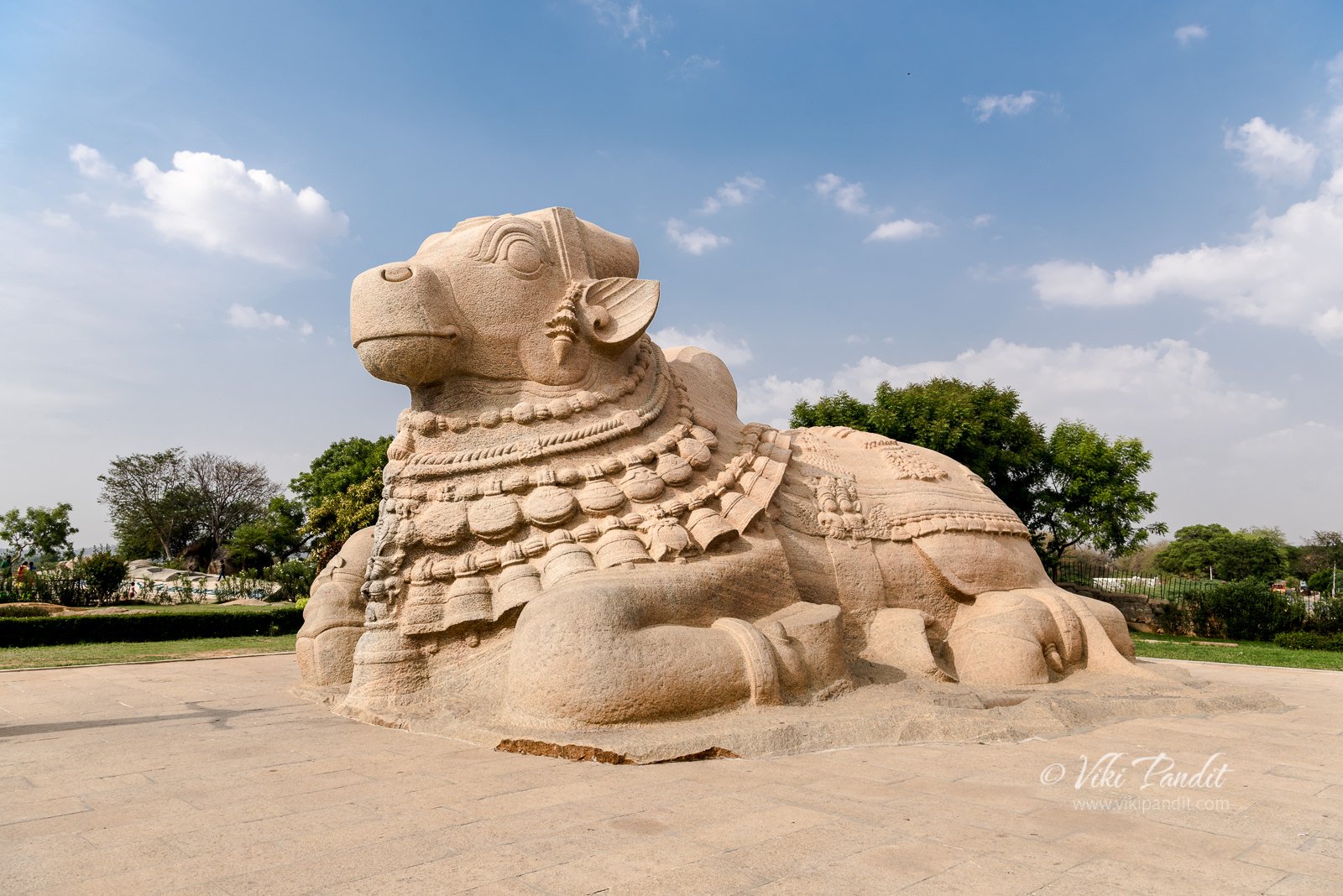
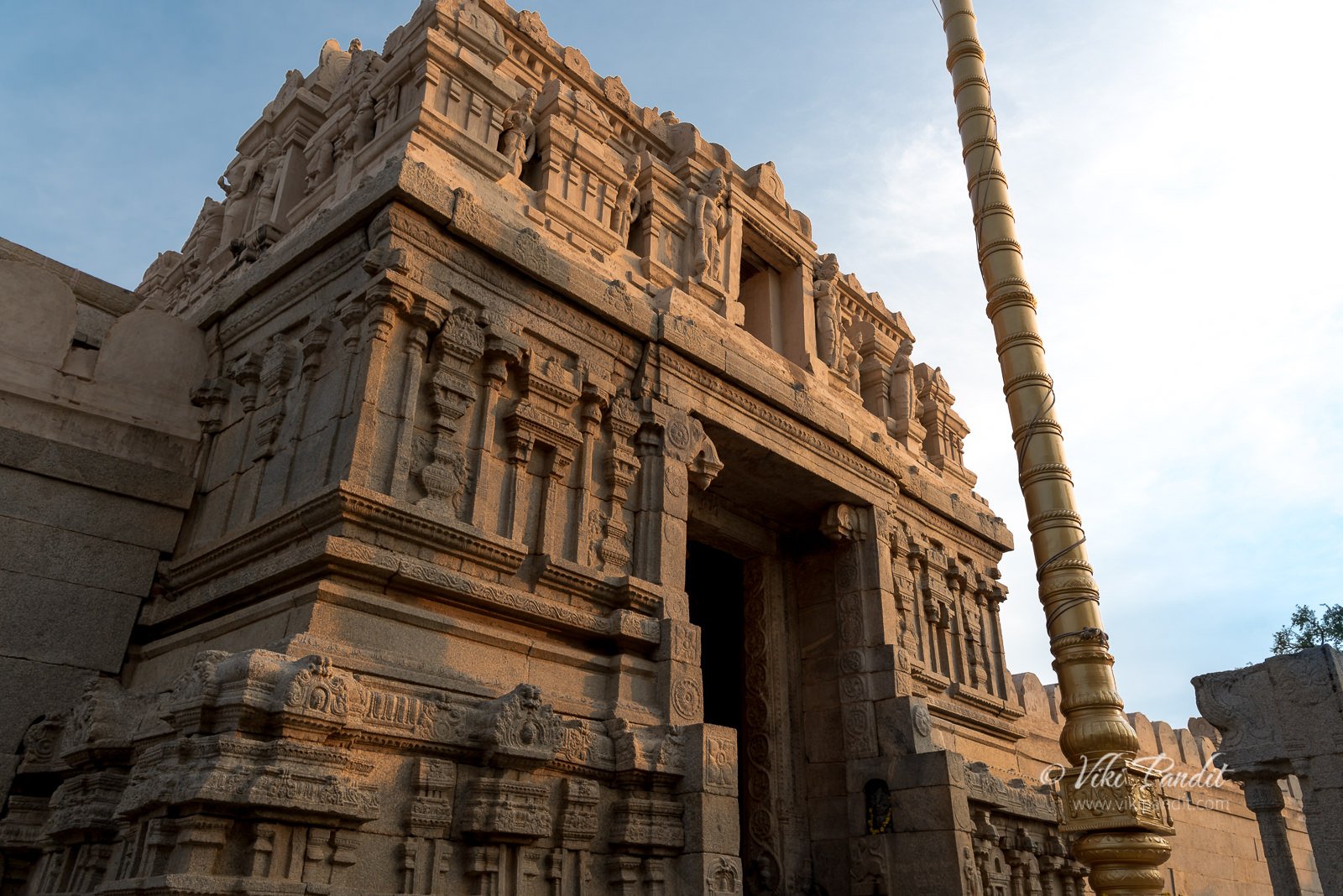



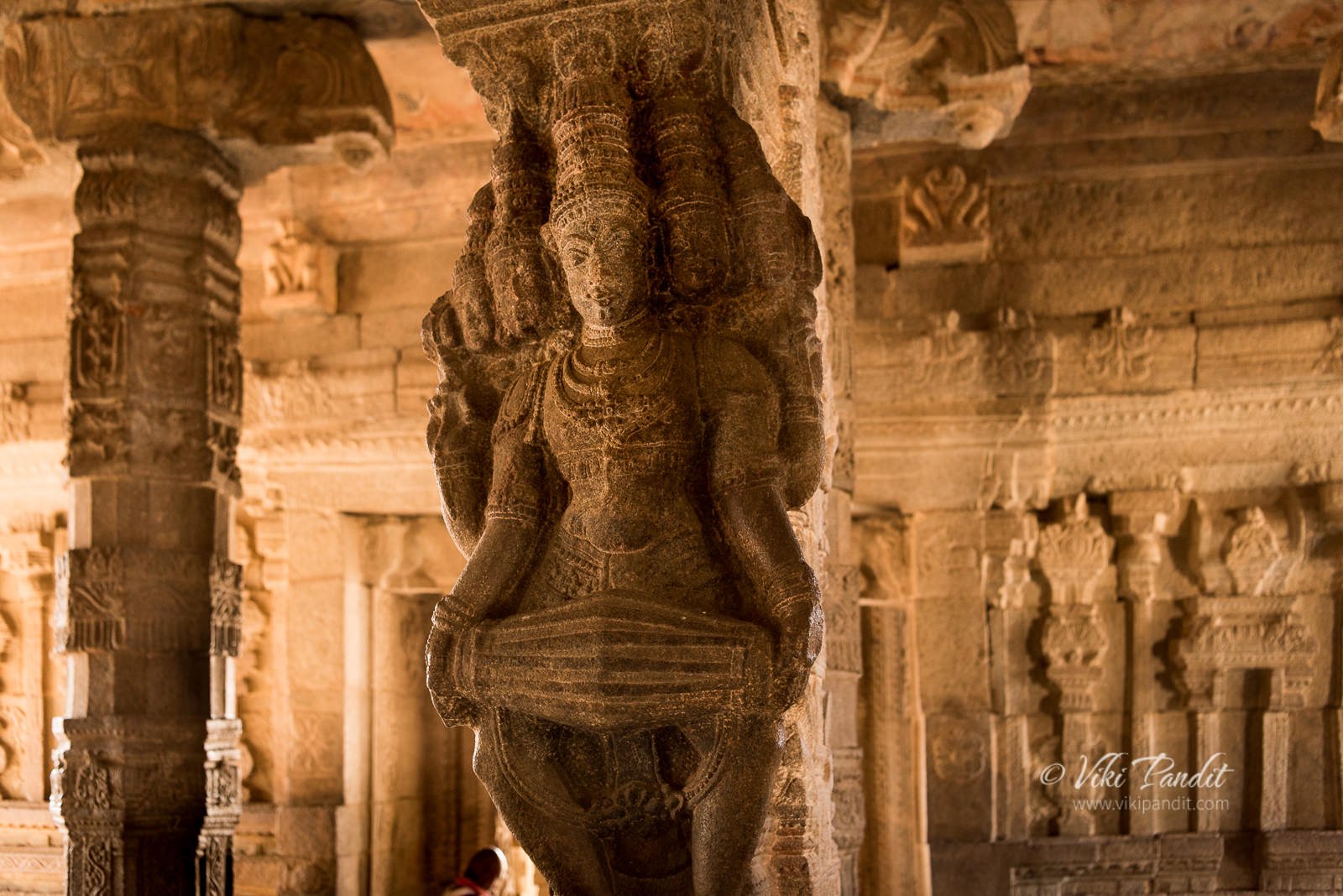






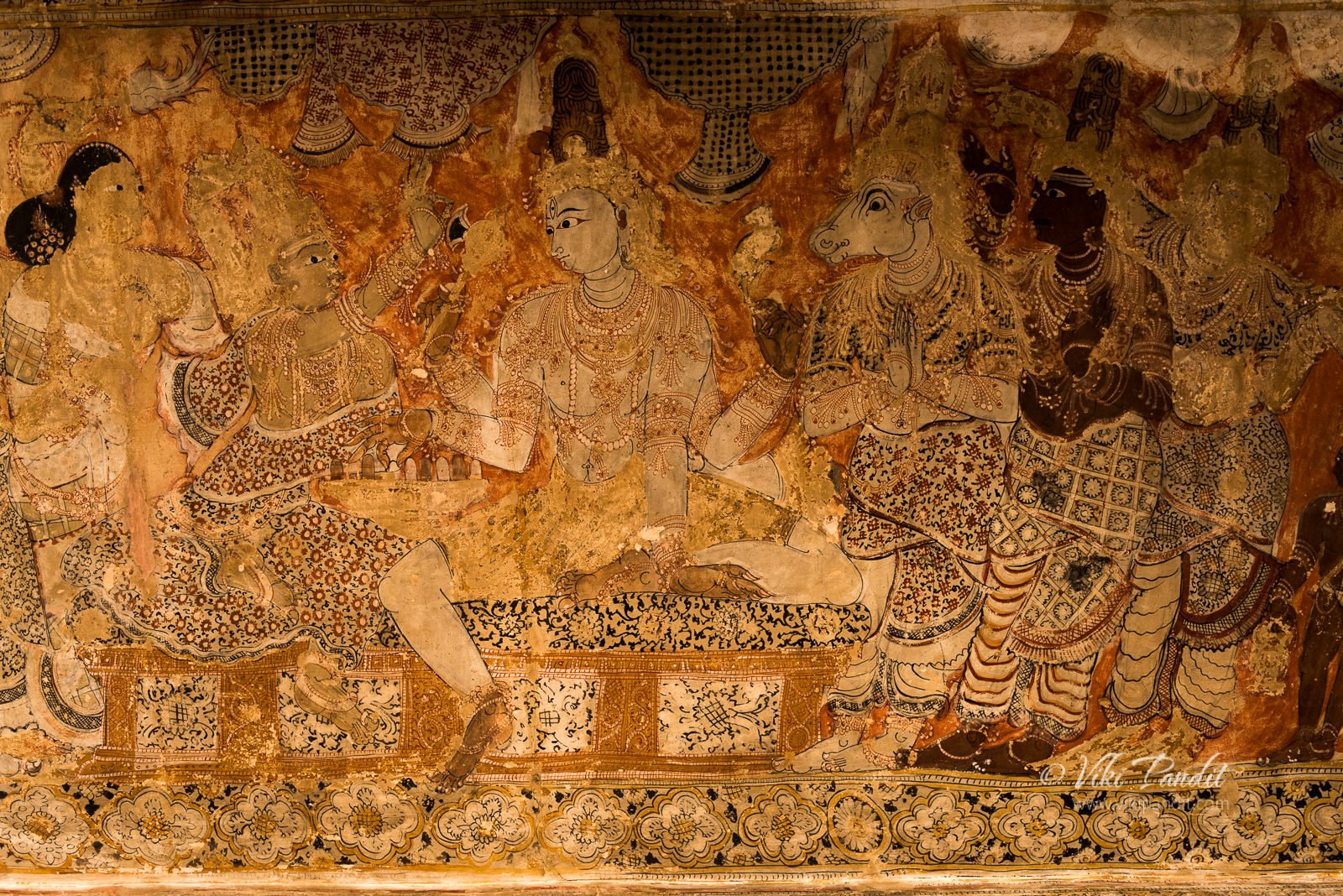
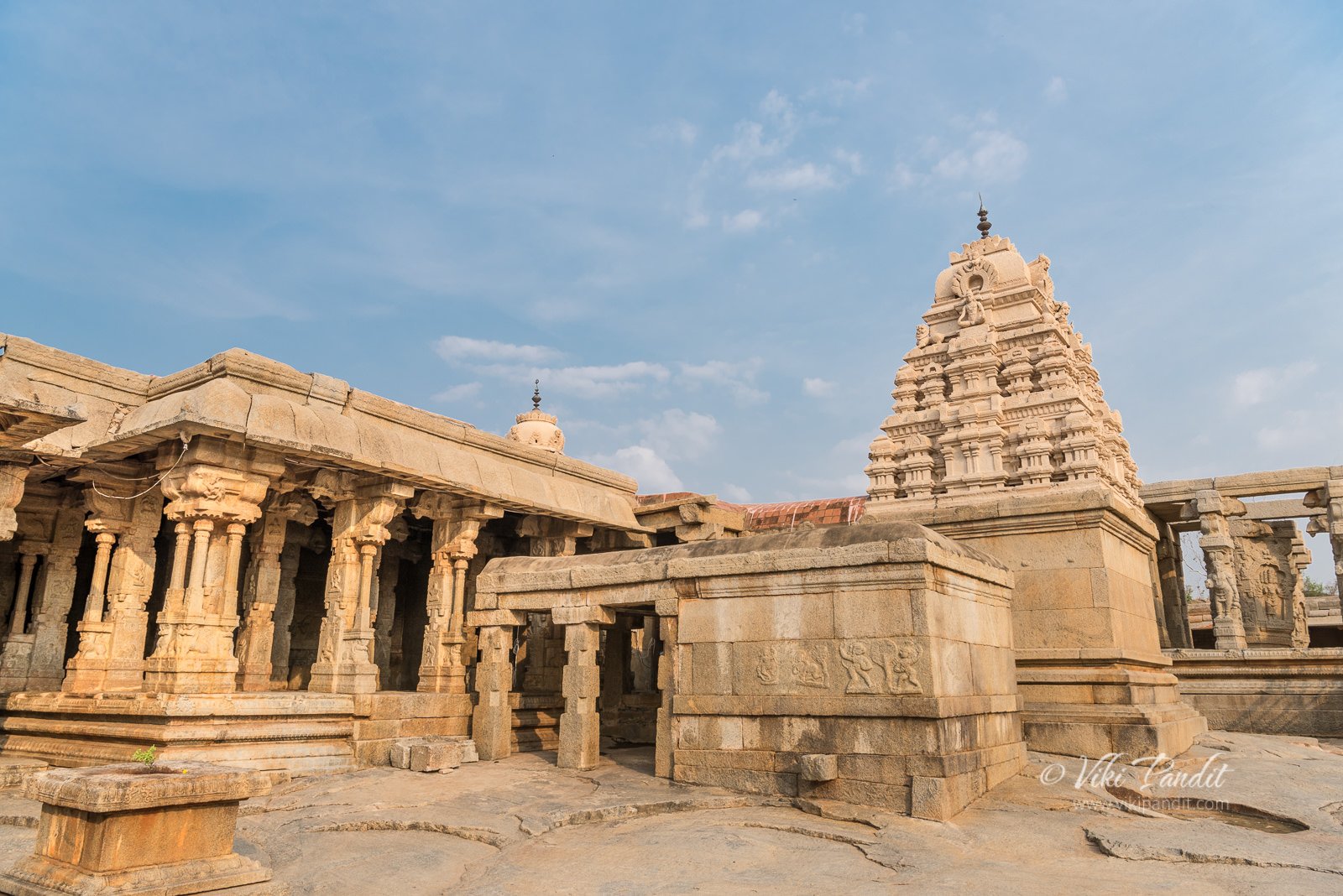




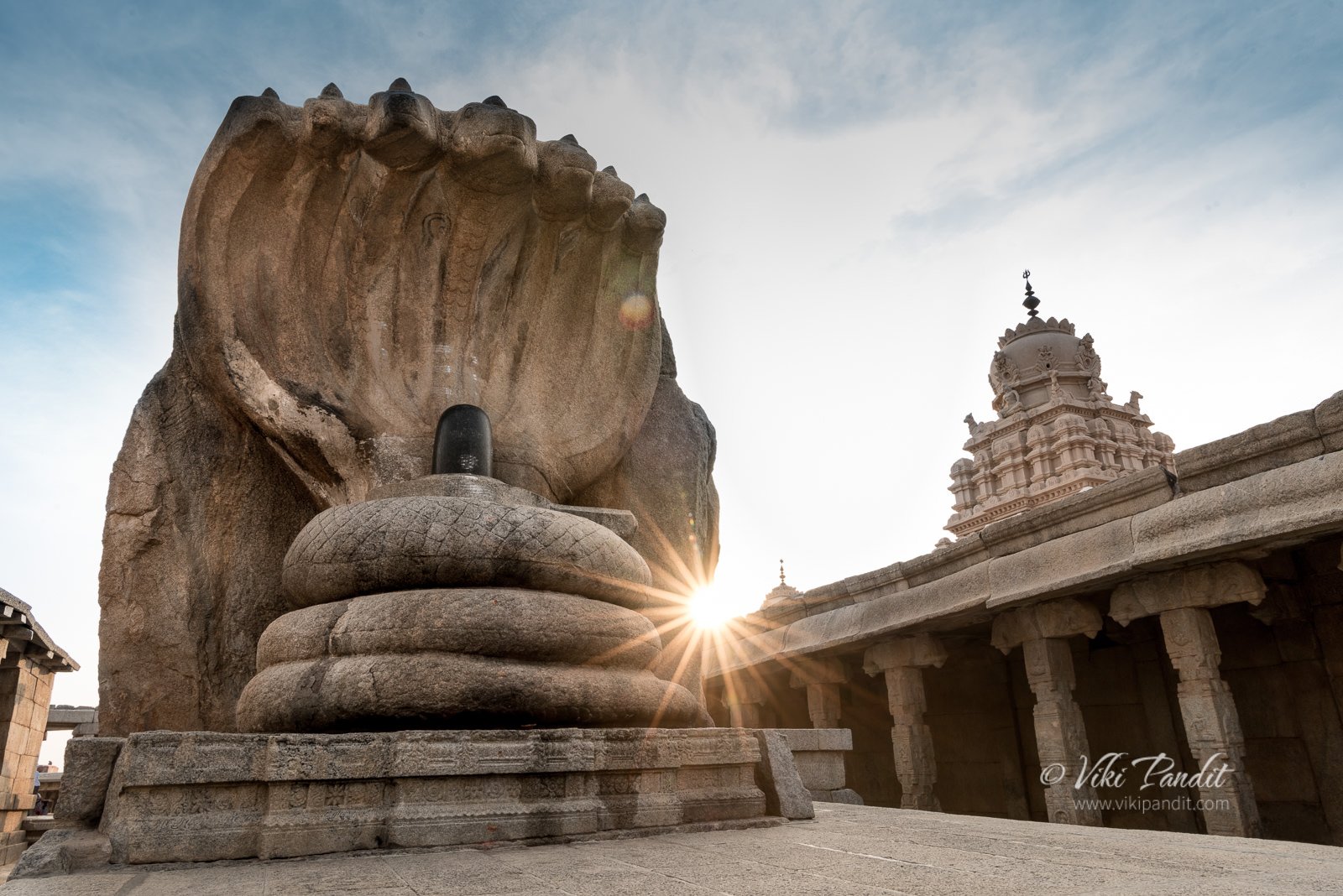

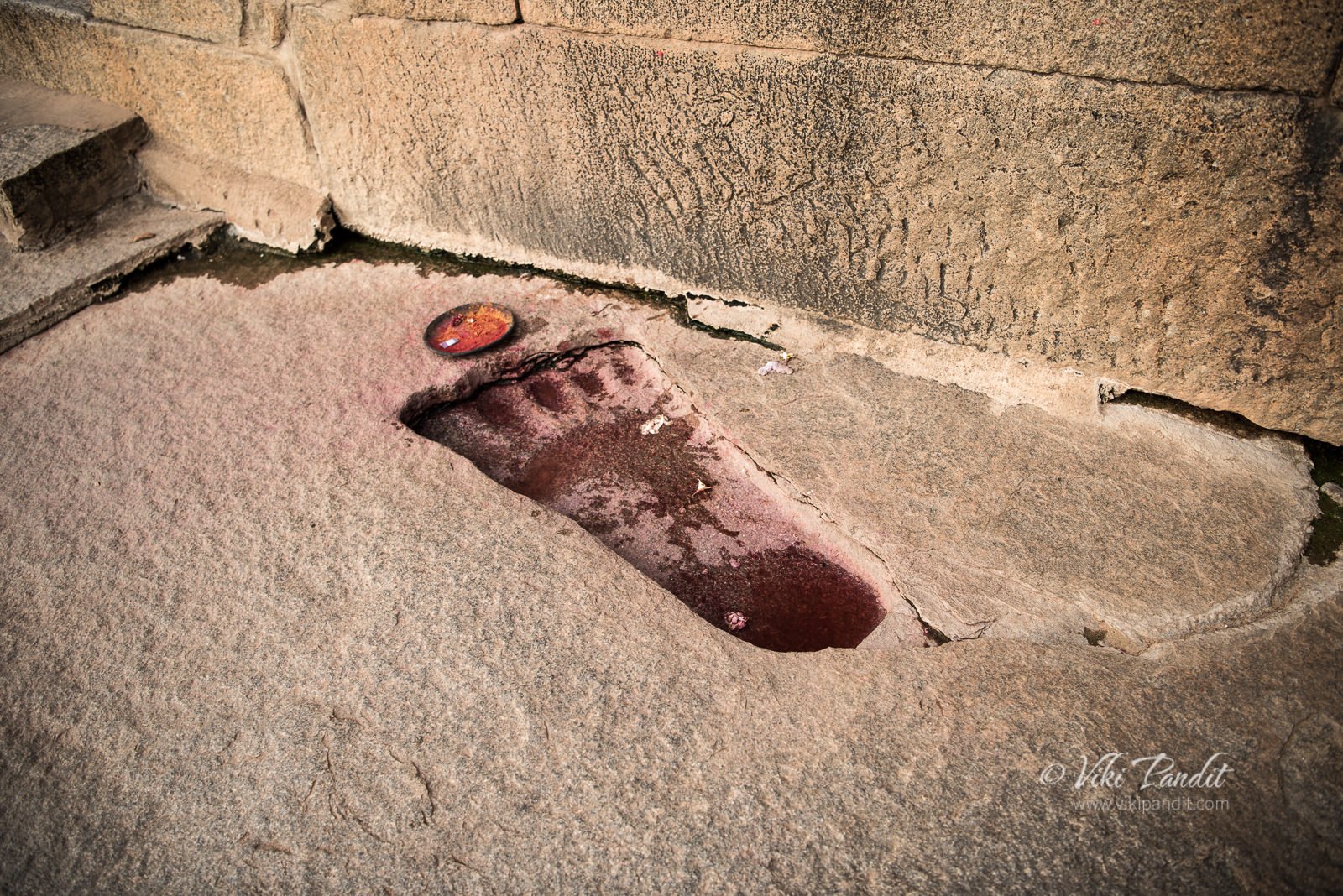
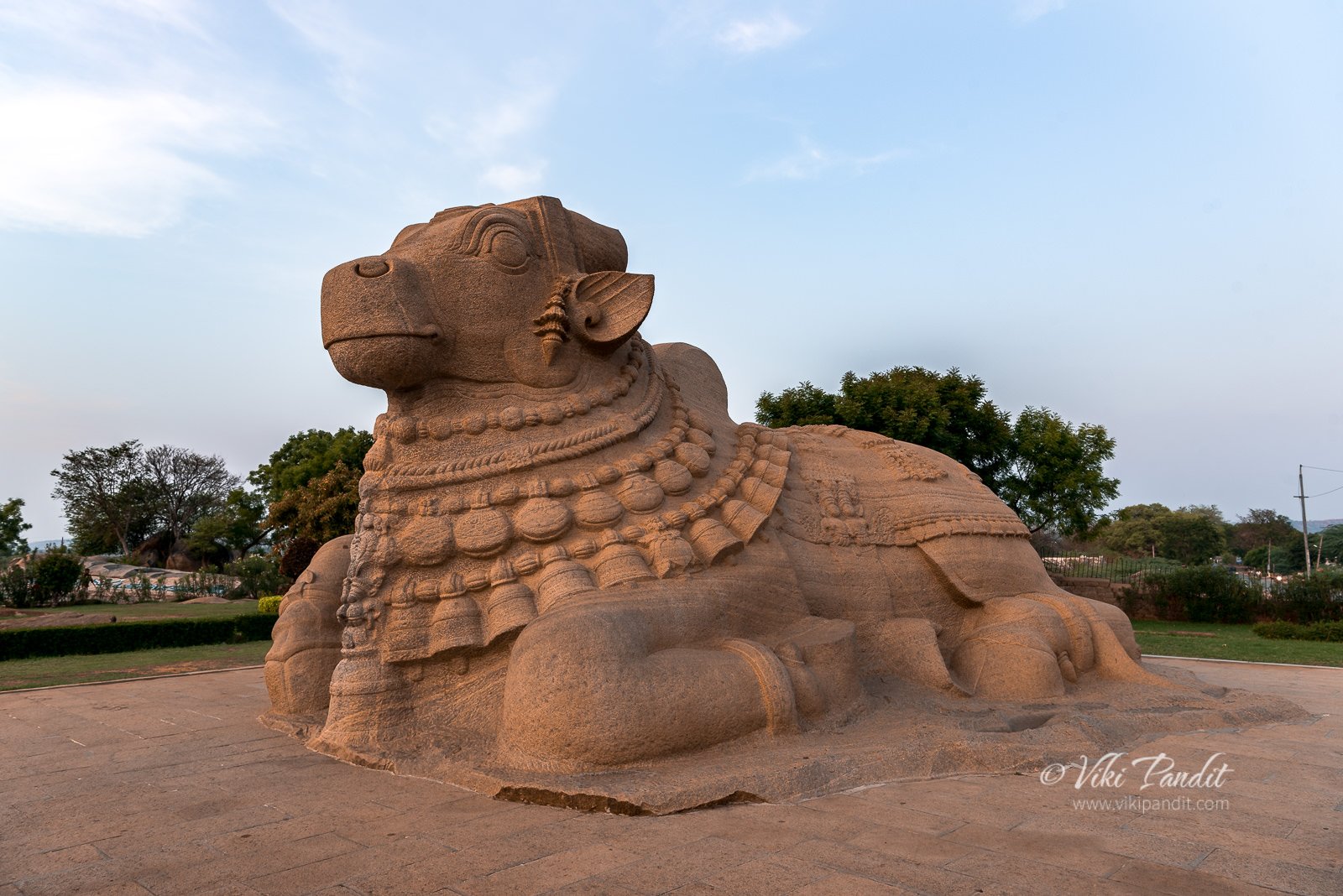
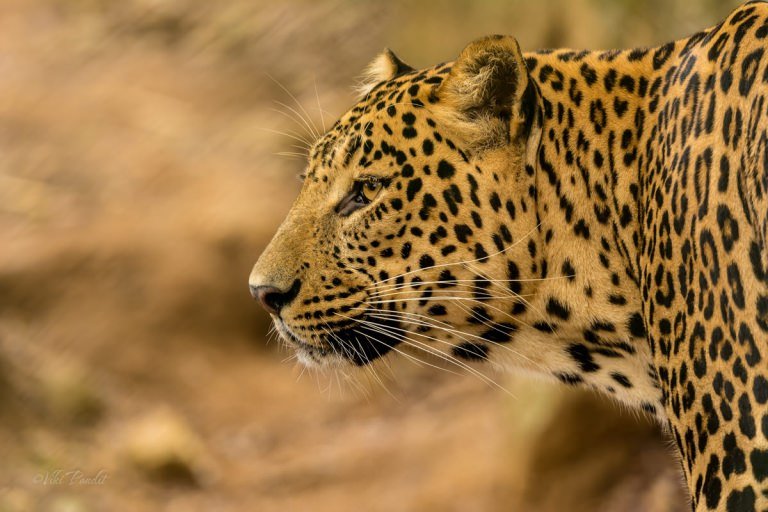
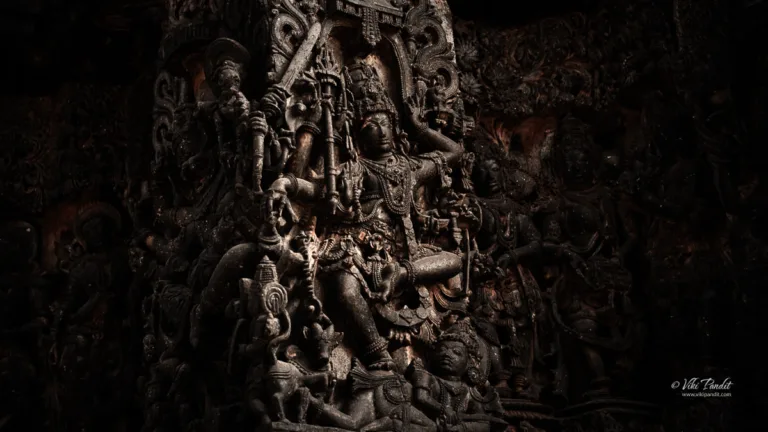

this is awesome even i will also go there
i had a project of collecting sculptures and monuments of vijayanagara empire and i got all the information from u
thanku very much
Hi Harish, thanks for leaving your comments.
Thanx a lot . U have mentioned Penukonda and Penugonda. One is in West Godavari and probably unrelated to the Vijayanagara empire . It has a beautiful temple of Kanyaka Parameswari.
The other similar sounding one was one of the capitals of the Vijayanagara empire, along with Anegundi, Hampi, and Chandragiri.
Very well written and useful
Hi Padmaja, thanks for reading. I did a bit of re-reading after your comment and I believe there are two different places sounding similar. I have corrected it to Penukonda. However, it seems in the local dialect it is also pronounced “Penugonda” which literally means a big hill surrounded by hills with high cliffs on all sides.
Hi Viki
Very nice write up. I had visited this temple this in first week of Oct. You have provided a wealth of information regarding the temple and also some nice photographs of the sculptures and murals. Especially the murals on the roof are in a bad shape now..
Thanks Shravan